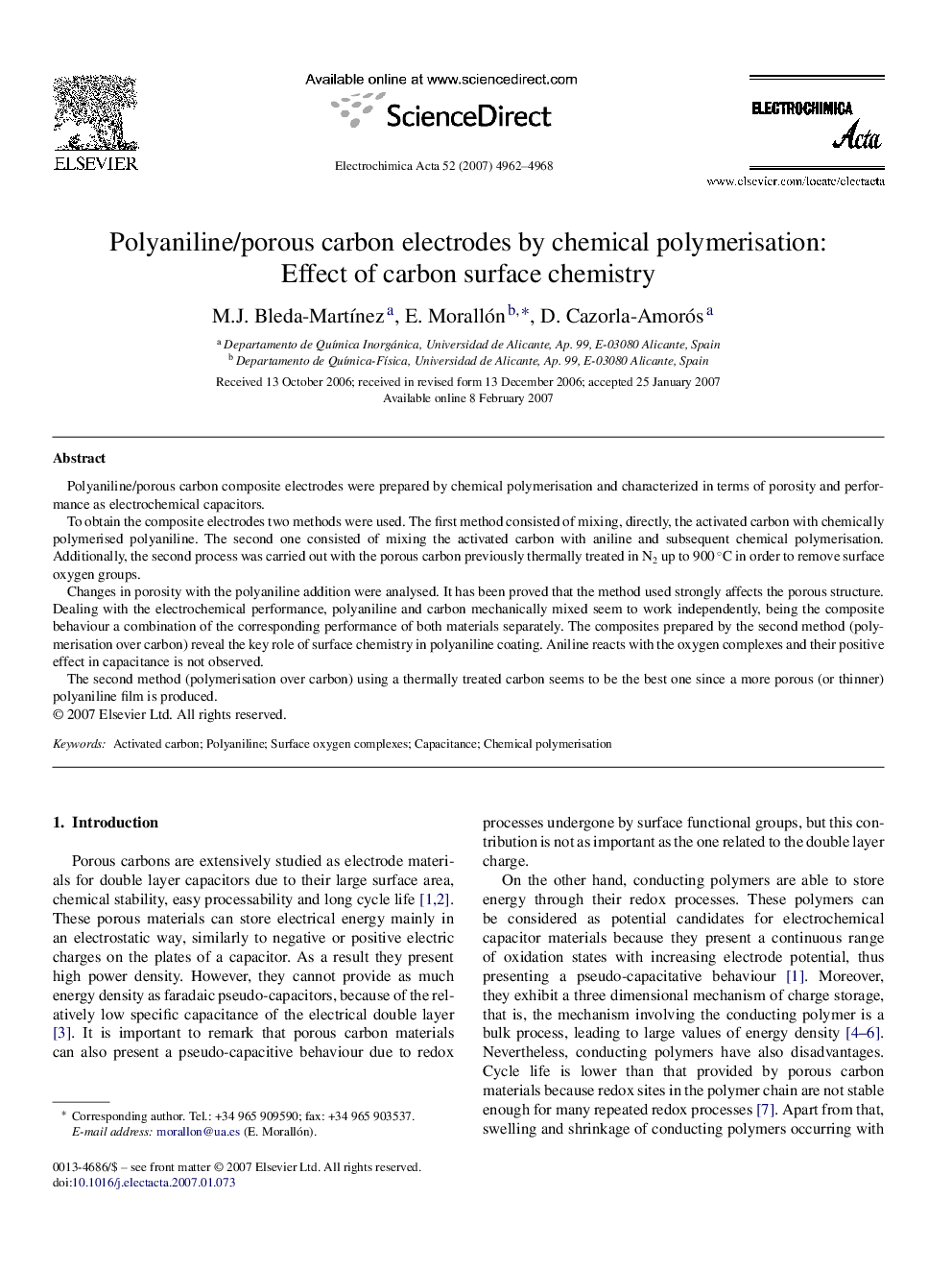| Article ID | Journal | Published Year | Pages | File Type |
|---|---|---|---|---|
| 193521 | Electrochimica Acta | 2007 | 7 Pages |
Polyaniline/porous carbon composite electrodes were prepared by chemical polymerisation and characterized in terms of porosity and performance as electrochemical capacitors.To obtain the composite electrodes two methods were used. The first method consisted of mixing, directly, the activated carbon with chemically polymerised polyaniline. The second one consisted of mixing the activated carbon with aniline and subsequent chemical polymerisation. Additionally, the second process was carried out with the porous carbon previously thermally treated in N2 up to 900 °C in order to remove surface oxygen groups.Changes in porosity with the polyaniline addition were analysed. It has been proved that the method used strongly affects the porous structure. Dealing with the electrochemical performance, polyaniline and carbon mechanically mixed seem to work independently, being the composite behaviour a combination of the corresponding performance of both materials separately. The composites prepared by the second method (polymerisation over carbon) reveal the key role of surface chemistry in polyaniline coating. Aniline reacts with the oxygen complexes and their positive effect in capacitance is not observed.The second method (polymerisation over carbon) using a thermally treated carbon seems to be the best one since a more porous (or thinner) polyaniline film is produced.
